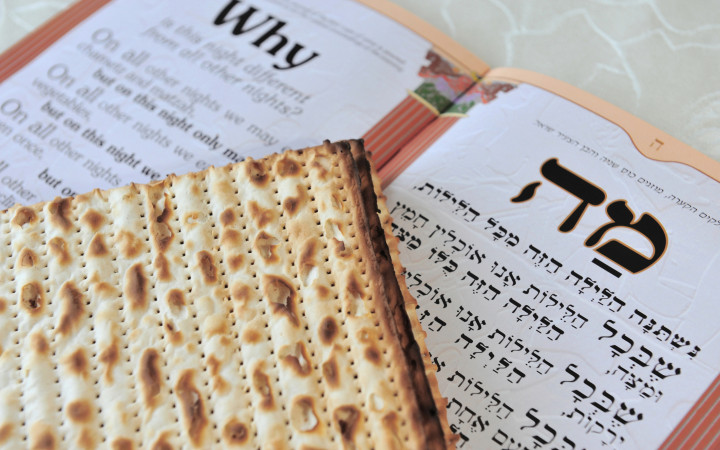Today’s Wonder of the Day was inspired by marisa. marisa Wonders, “why is passover called passover” Thanks for WONDERing with us, marisa!
Here in Wonderopolis, there aren’t many things we enjoy more than a celebration. That’s why we love learning about holidays! If you’ve been WONDERing with us for a while, you might already know about Día de Los Muertos. You may have read about Eid and Ramadan. Today, we’re learning about another holiday that’s rich with tradition—Passover!
What is Passover? In Hebrew, it’s called Pesach. It’s a Jewish holiday that celebrates the end of the enslavement of Jewish people in Egypt. If you’ve heard the Biblical account of Moses, the origin of Passover may sound familiar to you.
The Torah (first five books of the Jewish Bible) tells of Egyptian pharaohs enslaving the Jewish people for 400 years. The Pharaoh forced them to do hard labor. He also ordered the death of every newborn Jewish boy. However, a baby named Moses was saved by his mother and his sister, Miriam. He was then raised by none other than Pharaoh’s daughter.
Moses grew up in the court of Pharaoh knowing the story of his birth. As he grew older, it became more difficult to see the way his people were treated in Egypt. He moved away and became a shepherd. One day, God appeared to Moses in a burning bush. God told Moses to return to Egypt. There, he would help free the Jewish people. Moses followed this order, but Pharaoh didn’t want to let the enslaved people leave.
That’s when God unleashed the 10 plagues on Egypt. According to the text, the Nile River turned to blood. Then came swarms of frogs, lice, and wild animals. Next, the Egyptians’ domestic animals died from disease. The Egyptian people were afflicted by boils and a hail storm. This was followed by the plague of locusts and then by complete darkness.
Finally, the tenth plague would kill the firstborn son of every Egyptian family. To protect themselves, Jewish families painted their front doorposts and lintels with blood from a slaughtered lamb. God (or in some versions, an avenging angel) passed over these homes. That’s where the name of the holiday—Passover—came from.
After the tenth plague, Pharaoh allowed the Jewish people to leave Egypt. However, he soon ordered his army to recapture them. That’s when, according to Jewish texts, the Red Sea parted. It let Moses and the Jews through and then crashed down on the Egyptians.
Each year, Jewish people celebrate Passover to remember their history and thank God for protecting them. It’s a week-long celebration that starts on the fifteenth day of Nissan, a month in the Jewish calendar. On the Gregorian Calendar, this falls between mid-March and mid-April. No work is permitted on the first or last days of Passover.
How is Passover celebrated? A major part of the holiday is the removal of leavened bread from Jewish homes. No bread that has risen—things like sandwich bread, pizza crust, etc.—can be eaten during Passover. In the days leading up to the festival, people remove all such products from their homes in preparation.
The Seder is another part of the Passover celebration. This is a family meal. It occurs on either the first night or the first two nights of the festival. At the Seder, people follow a specific order of blessings and traditions. They eat traditional Passover foods like matzah (crunchy, unleavened bread), grape juice, bitter herbs, raisins, and eggs. They also read the account of Passover from a book called the Haggadah.
Passover traditions may vary depending on what part of the world you live in. However, one thing remains the same—the week of Passover is one of the holiest times of the year for Jewish people everywhere.
Standards: CCRA.R.1, CCRA.R.2, CCRA.R.4, CCRA.R.10, CCRA.W.2, CCRA.W.4, CCRA.L.1, CCRA.L.2, CCRA.L.3, CCRA.L.6, CCRA.SL.1, CCRA.SL.2




